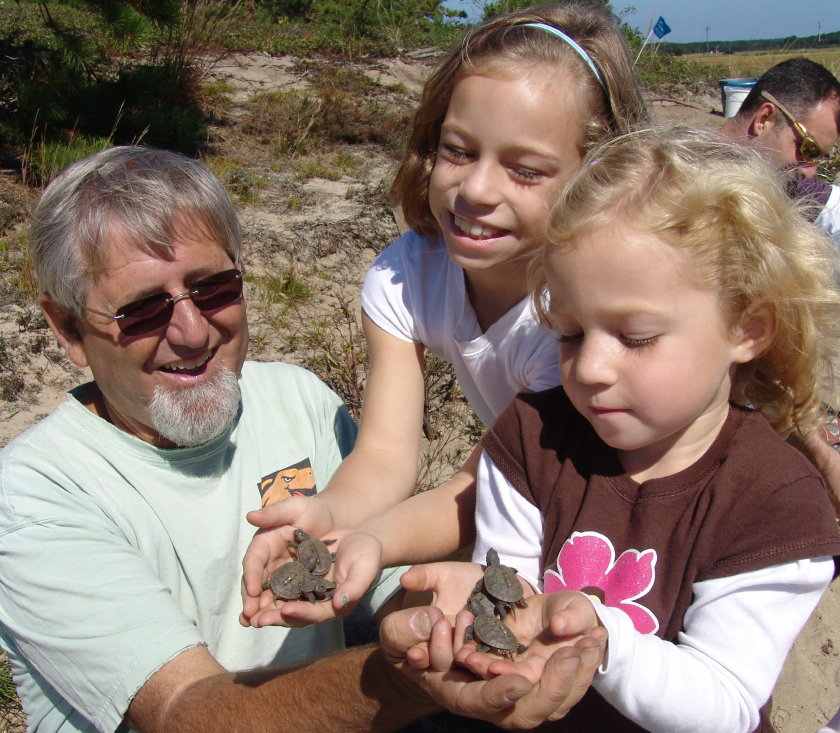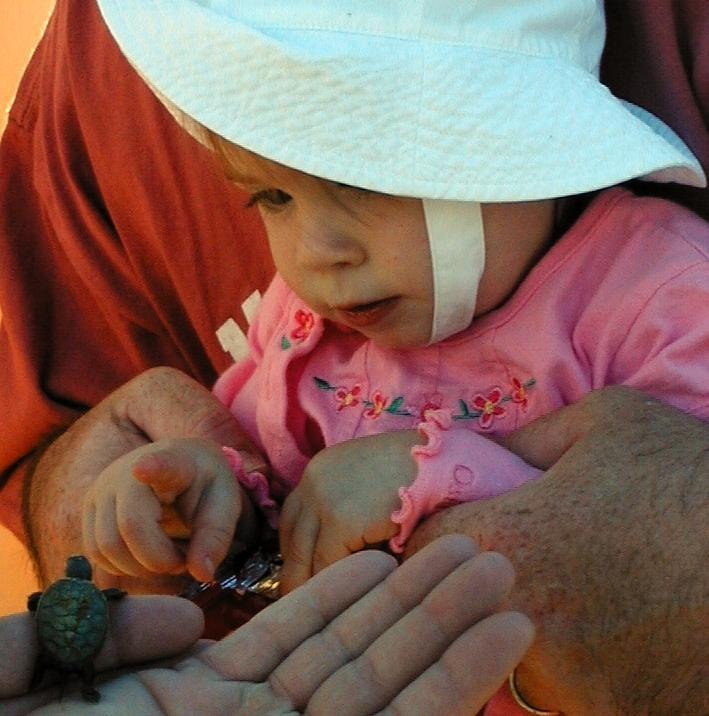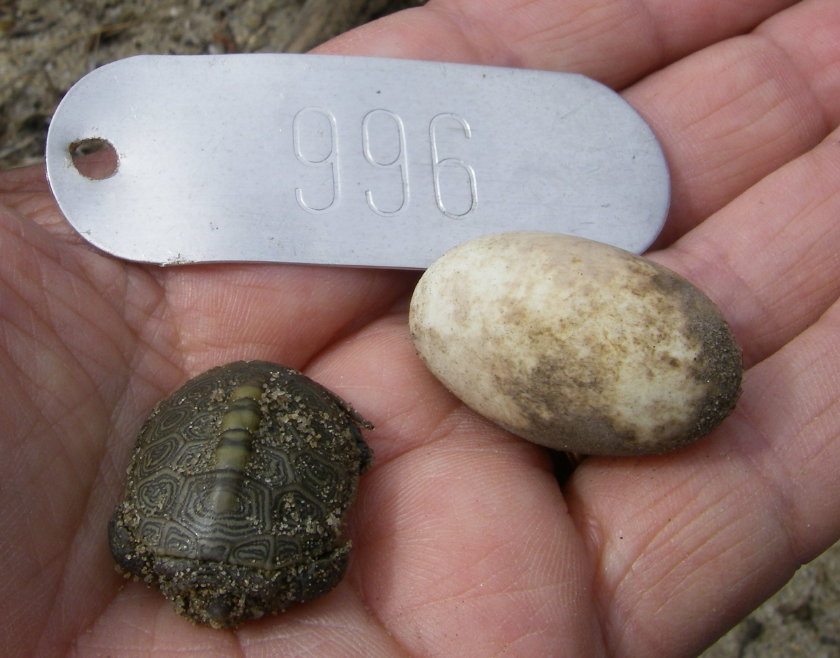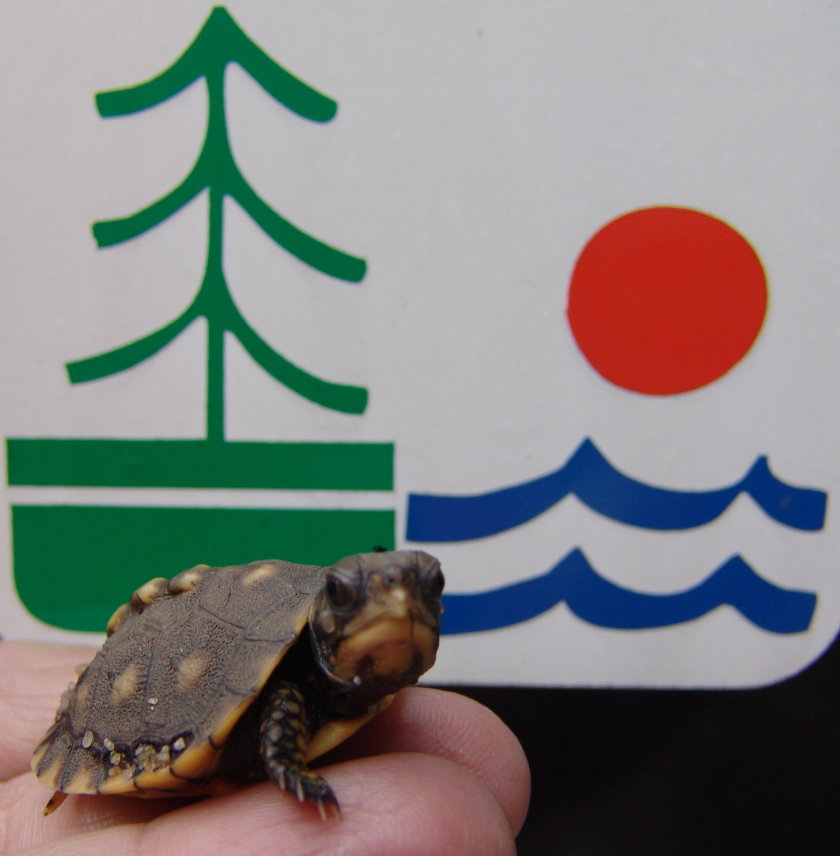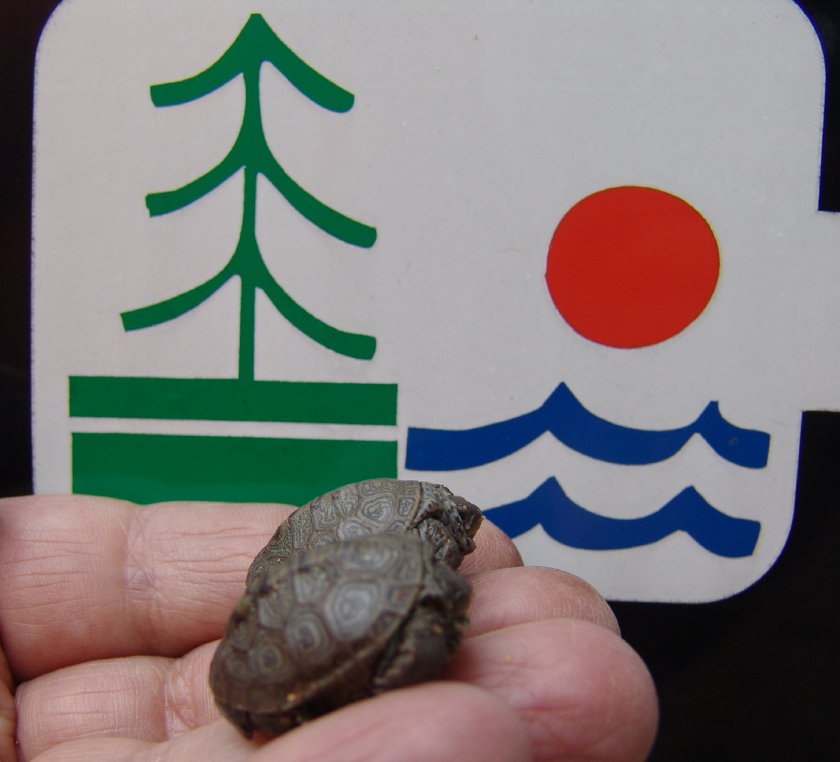Male Blue Shark (Prionace glauca) in Wellfleet Bay
Holy mackerel! Has Jaws wandered into paradise? Who will save the children? Who will save the turtles? Where is Quinn when you really need him?
Amazing Find on the Tidal Flats off Lieutenant Island
Not often does a large pelagic shark find its way into the shallows of Wellfleet Bay. They prefer the deep, cool waters of the Atlantic Ocean. On a few occasions in fall, Don has encountered basking sharks scooping plankton from high tide flooded creeks and coves within the Wellfleet Bay estuarine system. But an 11-foot blue shark is a surprising find on the tidal flats off Lieutenant Island. Yes, Virginia, the very same tidal flats where kids from four to one hundred four play all summer long, and much more importantly, where we all go wading in chest-high water for terrapins. Kind-a gives you goose bumps down your spine, doesn’t it? No doubt we’ll add another risk waiver form for interns and volunteers for the 2009 research season.
Sue Wieber Nourse Provides Sizing Perspective
Sue, proudly sporting her Williams sweatshirt, provides sizing perspective for the leviathan.  This male shark measured 3.37 meters (almost precisely 11 feet) from the point of his snout to the trailing tip of his caudal fin. The fork length (snout to center of caudal fin fork) was about 8.5 feet. And, yes, the more scientific length is the fork length measurement, but the 11-foot shark headline reads so much more impressively than an 8.5-foot shark.Â
The dorsal fin rose 28 centimeters (11 inches) above his back.Â
We had no scale nor a means to get one to the scene. The only estimate of weight comes from Don Lewis as he moved the critter for various measurements and then for the necropsy. His back suggests a weight in the range of 250+ pounds, supported by estimated shark length-to-weight charts.
Click Here to View Video in High Quality
Blue Shark from Tooth to Tail
What an extraordinary opportunity to examine such an apex predator at close quarters! October’s low sun angle enhanced the shark’s blue hue, casting long, deep shadows that magnified his powerful form. These signal moments spark heightened excitement for humans when adrenaline spikes as you approach animals that can actually eat you. “Lions and tigers and bears, oh my!” No question; you can add blue sharks to that mantra as they are listed among the top ten “world’s most dangerous sharks.”
You appreciate the animal’s lethal power as you take measurements, none more impressive than teeth size, mouth width and gape. Once adrenaline levels subside, a feeling of sadness and a sense of loss rise. The unexpected death of such a magnificent creature that fills a critical niche in the ocean ecosystem is disconcerting. We hope that a quick in situ necropsy might provide a clue to this blue shark’s demise.
Bob Prescott & Brad Timm Observe as Don Lewis Prepares for Necropsy
Since “Quinn” is long gone and Greg Skomal wasn’t in town, we did the best we could without a shark expert on hand. Between Bob Prescott (Wellfleet Bay Wildlife Sanctuary director), Sue Wieber Nourse (Jaeger Chair for Marine Studies at Tabor), Brad Timm (UMass Amherst) and Don Lewis (Turtle Guy), we managed a quick examination of the blue shark’s internals. The animal was extremely fresh.
Powerful Blue Shark with Wellfleet Bay in Background
In summary, we found no smoking gun. No identifiable premortem injuries or abrasions. Lots of parasites in and on the liver, in the stomach and in other cavities.  Nothing else in the stomach except for a few remnant fish eye lenses and nothing else we could detect within the gastro-intestinal tract. The GI sysem was largely devoid of food. We collected samples of parasites, liver tissue and tissue from beneath the dorsal fin. We have no conjecture beyond mere guesswork about the cause of death.
Open Wide and Say, “Ah”












